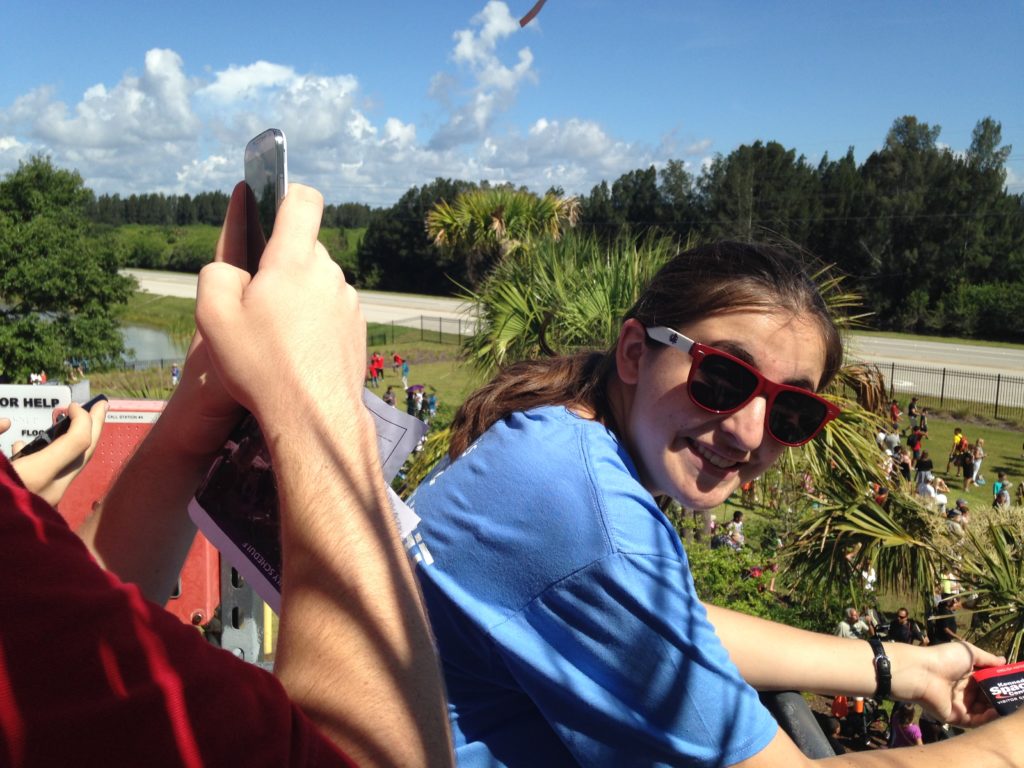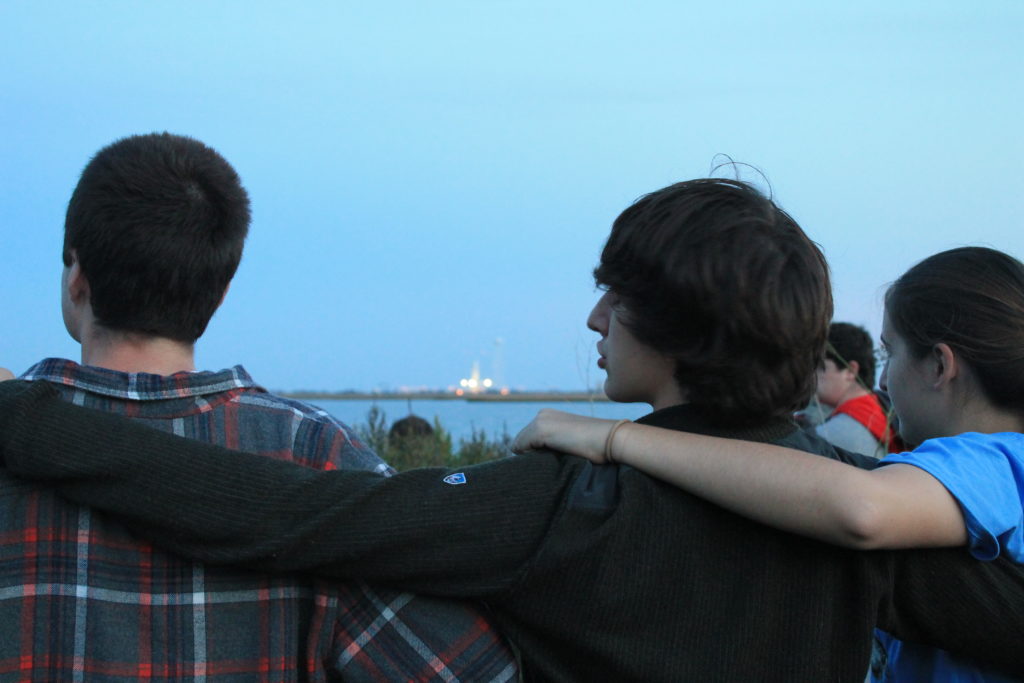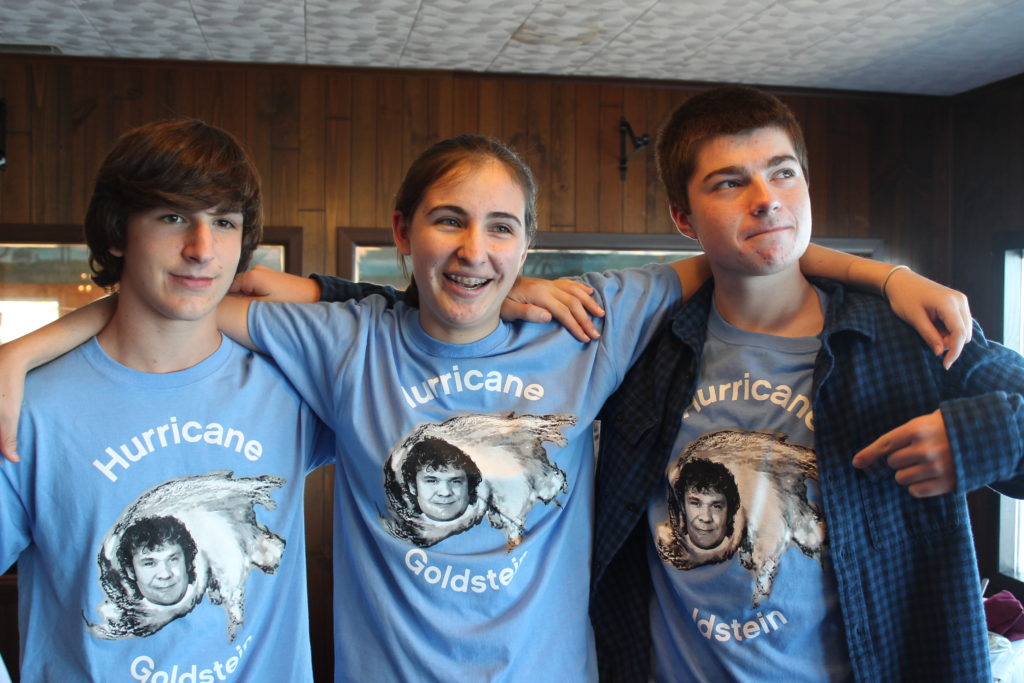
We met Rachel Lindbergh and her mother at the ISS Conference this summer in Boston. Rachel can share a story not many people can: her research blew up on its way to space. Twice. Rachel shared her story of how until she participated in hands-on STEM research in the classroom, she wasn’t too interested. in science-learning. But after participating in the Student Spaceflight Experiment Program- a program of the National Center for Earth and Space Science Education in strategic partnership with NanoRacks/DreamUp – she has decided to pursue Physics at the University of Chicago. This is the first of two blog posts- one from Rachel, and one from her mother’s perspective. We hope you enjoy!
Rachel Lindbergh: This Is Real Spaceflight
My last year of high school was mostly like any other senior’s. I had ACT and SAT testing, my fair share of stress-filled nights preparing for exams and writing college essays, a few senior skips days, a little case of senioritis, and of course the exhilaration and despair of the college acceptance and rejection letters trickling through the mail. However, I did have a few experiences outside of the norm– namely that my team’s experiment was selected for spaceflight on the International Space Station (ISS) and subsequently blew up twice. How many kids can say that?
I am a co-principal investigator on a team sending an experiment to the International Space Station. Our experiment, enabled by the Student Spaceflight Experiments Program (SSEP), focuses on the development and detachment of tin whiskers under spaceflight conditions. SSEP is a science, technology, engineering, and mathematics (STEM) program that gives 5th through 16th grade students across the country the opportunity to propose and implement experiments on the ISS The process of SSEP– authentic proposal writing across schools, a rigorous selection process by educators and scientists, and presentations by the student researchers in a SSEP Conference– closely mimics what real scientists do and gives students a taste of the real thing.
In SSEP, we have a saying that pretty much encapsulates all that we do and how we do it: this is real spaceflight all the time. If it’s late on a school night and you have a flight configuration form to turn in, well, spaceflight doesn’t sleep; finish the form. Is it summer break? Well, spaceflight doesn’t do vacations. If you want to achieve something truly remarkable, you have to get up and work for it. It’s a lesson that SSEP doesn’t teach as much as drills into your head, but I never really appreciated it for what it was until my first rocket explosion.

“If you want to achieve something truly remarkable, you have to get up and work for it”
— Rachel Lindbergh, SSEP
Our experiment on tin whiskers was slated for launch on Orb-3 in October 2014 form Wallops Island, Virginia. The evening of the launch, our family and over a hundred other student scientists, family members, and teachers representing SSEP trekked to the end of Arbuckle Neck Road, a deserted country road winding through the farmland of Virginia, to view the launch on the marshy beach just over a mile and a half away from the rocket itself. There was only a small river between us and the Antares. The Antares stood 140 feet tall with the Cygnus spacecraft on the top. All sorts of scientific cargo and supplies were in that spacecraft, and our experiment and those of 17 other student groups were among them. Those experiments represented 18 different communities across the country, representing over 6,700 students in 5th through 15th grade who submitted their own proposals.
The excitement was palpable. Our eyes were glued to the launch pad, to that towering rocket. We all counted down the final ten seconds together and saw the engines ignite and the rocket rise. Then, in a matter of seconds, the rocket was consumed in an explosion and flames covered the launch pad. The force of the explosion knocked us back, the heat hit our faces.
Not to say that experience wasn’t memorable, but what I remember the most was the aftermath. The police escorted us out of the premise. We drove back to the hotel. We got ice cream and called our mentors. Within a week, NanoRacks LLC had not only pledged to re-fly all of the student experiments but have them on the very next re-supply mission to the ISS.
What an amazing thing that is. All of the student researchers, our mentors and teachers, and the SSEP program re-created their hard work and had those experiments on the SpaceX-5 within weeks of the Orb-3 explosion. It was an incredible message to send to all of the kids, that failure isn’t what defines us. Its what we do in the face of failure that defines us– that’s real spaceflight all the time. If it wasn’t for the support and involvement of organizations like the National Center for Earth and Space Science Education, NanoRacks LLC and the Center for the Advancement of Science in Space (CASIS), my teammates and I would never have had these incredible opportunities. Thank you!

Learning that lesson allowed my team and I to keep going after the second explosion we endured– the SpaceX CRS-7. Seeing the lesson in action inspired me to do what I could to join the space community, and if all goes well, I will. I’ll be studying physics at the University of Chicago next year, and hopefully there will be plenty more adventures in real spaceflight to come.
The Student Spaceflight Experiments Program (SSEP) is a program of the National Center for Earth and Space Science Education (NCESSE) in the U.S., and the Arthur C. Clarke Institute for Space Education internationally. It is enabled through a strategic partnership with NanoRacks LLC, working with NASA under a Space Act Agreement as part of the utilization of the International Space Station as a National Laboratory. SSEP is the first pre-college STEM education program that is both a U.S. national initiative and implemented as an on-orbit commercial space venture.
The Smithsonian National Air and Space Museum, Center for the Advancement of Science in Space (CASIS), and Subaru of America, Inc., are U.S. National Partners on the Student Spaceflight Experiments Program. Magellan Aerospace is a Canadian National Partner on the Student Spaceflight Experiments Program.

